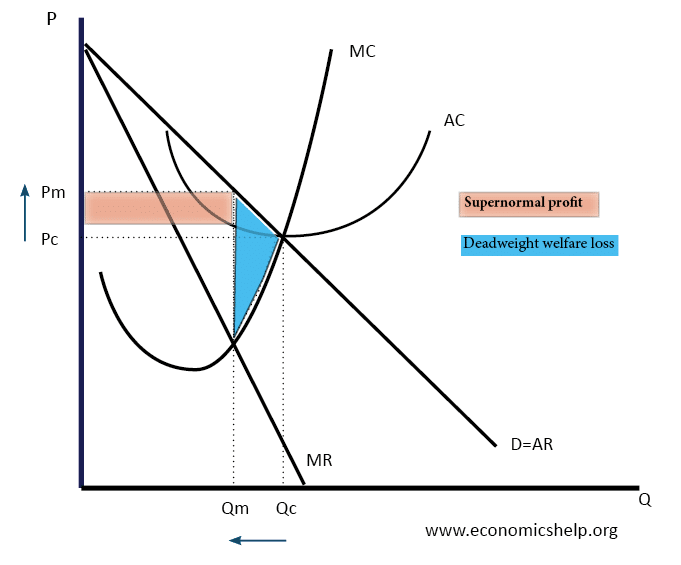Ch 12 - Market power: Monopoly and oligopoly
Revenue and cost curves in a monopolistic competition:
- Each firm is able to differentiate to some degree, it can reduce its price and increase its net revenues
- The demand curve for this market will tend to have a sloping downward demand curve
Monopoly: the exclusive possession or control of the supply of or trade in a commodity or service.
Characteristic of demand curve of the monopolistic competitive firm:
- Market faces a relatively elastic demand
- For every addition output to be sold, the firm will need to sell its output at a lower price
Short run and long run profits of MC firms:
- Economic profits made in short run attract new firms to enter the market
- Demand for goods reduced as competition increases
- Firms are more likely to make a profit since they maximise their profits at a level where MR=MC
- Profit is equal to average total cost
- Firms in the market can easily make losses due to reducing demand

\n }}A firm’s monopolistic market cannot achieve both productive efficiency and allocative efficiency (produces at a point where MC curve cuts the AR curve). Despite firms in this type of market being profit maximisers, in the long run, they are neither allocative efficient nor productive efficient.}}
Oligopoly: market with few dominant sellers which together controls all or most of a market share.
- Interdependence of firms: action of one firm affects the action of the other firms
- Barriers to entry: market maintains its small number
- Non price competition
Formal Collusion: exists when firms form an organisation or a group which prices the amount of output to be produced is decided
Tacit Collusion: type of collusion that exists when firms charge the same price on goods they produce without having a formal agreement
Market efficiency in Oligopoly:
- Produces where marginal revenue is equal to marginal cost MR=MC
Non-collusive oligopoly:
- exists when firms in the market do not organise themselves to decide on the price and the quantity of outputs to be produced
Disadvantages of monopoly:
- Higher prices Higher price and lower output than under perfect competition. This leads to a decline in consumer surplus and a deadweight welfare loss
- Allocative inefficiency. A monopoly is allocatively inefficient because in monopoly the price is greater than MC. P > MC. In a competitive market, the price would be lower and more consumers would benefit
- Diseconomies of scale – It is possible that if a monopoly gets too big, it may experience diseconomies of scale. – higher average costs because it gets too big
Advantages of monopoly:
- Research and development: The supernormal profit can enable more investment in research and development, leading to better products.
- Good quality firm: A firm may gain monopoly power because it is very innovative and successful, e.g. Google, Amazon, Apple. Therefore, monopoly does not always lead to inefficiency.